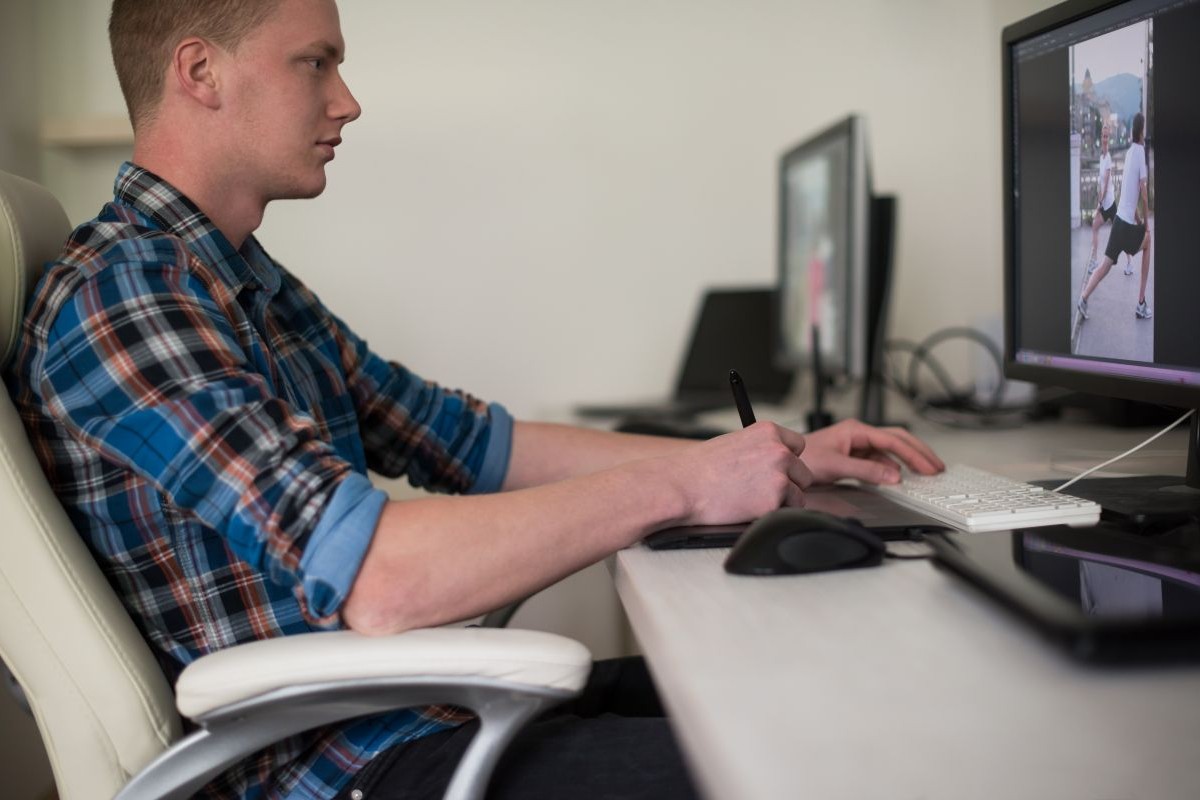
South Africa Animation Studio : Is Rotoscoping Still Relevant?
Animation is no stranger to change, from hand-drawn frames to digital techniques and now, artificial intelligence (AI). Among the many methods that have stood the test of time, rotoscoping has remained a reliable tool in the animation and visual effects (VFX) world. But with AI tools quickly advancing, one might wonder: is rotoscoping still relevant today, or is it being phased out in favour of faster, automated solutions? For animation studios, including a South Africa animation studio, understanding the role of AI in this process is essential to staying competitive and offering clients high-quality, efficient results. This article will dive into how AI-assisted tools are reshaping rotoscoping, the balance between traditional techniques and new technologies, and whether this long-established method still has a place in today’s animation industry.
What is Rotoscoping and Why Is It Important?
At its core, rotoscoping is the process of tracing over live-action footage, frame by frame, to create realistic animations. While it might sound a little tedious, it has played a critical role in producing lifelike movement and integrating animated elements with real-world footage. The technique first gained fame in the 1920s when Max Fleischer used it to create fluid character movements in early animation, and it has since been used for everything from creating realistic animated characters to blending visual effects with live-action film.
For animation studios, rotoscoping is essential for achieving precise and natural-looking movement, whether in traditional or digital animation. It is also used in VFX to separate actors from the background or to composite computer-generated imagery (CGI) into live-action footage. In fact, some of the most iconic effects in cinema, like the glowing lightsabers in Star Wars, relied heavily on rotoscoping.
How AI-Assisted Tools Are Changing Rotoscoping
With the rise of AI and machine learning, the world of rotoscoping has begun to evolve. Traditionally, the process was painstaking and time-consuming—animators had to trace over each individual frame by hand. But now, AI-assisted tools can significantly speed up this process by automating much of the heavy lifting.
Software like Adobe After Effects’ Roto Brush and AI-based solutions like RunwayML have introduced features that automatically detect objects and help artists separate them from the background with minimal manual effort. These AI systems can quickly identify subjects, even in complex scenes with motion or intricate details. This dramatically reduces the time it takes to isolate elements in a shot, which is especially helpful for animation and VFX studios working under tight deadlines.
AI has also made it easier to handle the most intricate parts of rotoscoping, such as tracing fine details like hair, fur, or other overlapping elements. Traditionally, this would require frame-by-frame precision, but with AI tools, the software can adapt and improve its accuracy over time, giving artists more control and less tedious work.
However, while AI is making significant strides in automating rotoscoping, it is not without its limitations. Complex scenes, particularly those with fine details or dramatic lighting, can still present challenges. Sometimes, the AI algorithms can struggle to differentiate between similar colours or materials, requiring human intervention to refine the selection. Additionally, AI still lacks the artistic eye and intuition that experienced animators bring to the table. That is where a South Africa animation studio can continue to add value, ensuring the final product meets artistic expectations and quality standards.
Traditional Techniques vs. New Technology: A Balanced Approach
Despite AI’s advances, traditional rotoscoping still plays an important role in many production processes, and often, the best results come from combining both methods. AI tools are excellent for handling the repetitive tasks of isolating objects or creating basic masks, but they often require an artist’s touch to ensure that the animation remains visually appealing and fits within the overall creative direction of a project.
For example, while AI tools can quickly track an actor’s movement, a human animator might still need to refine the animation to capture the subtleties of expression or movement. This combination of speed and precision offered by AI, alongside the artistic input of skilled professionals, allows studios to deliver high-quality results without sacrificing time or creative control.
Many animation studios, such as a South Africa animation studio, are beginning to integrate AI-assisted rotoscoping tools alongside traditional techniques. This hybrid workflow enables them to meet the demands of modern production schedules while ensuring that the final product still delivers the artistic quality clients expect. By embracing new technology without abandoning traditional artistry, animation studios can offer more value to their clients, allowing for both efficiency and creativity.
Famous Examples of Rotoscoping
- “A Scanner Darkly” (2006)
One of the most well-known modern examples of rotoscoping is Richard Linklater’s A Scanner Darkly, an animated film that uses rotoscoping to give the characters a unique, surreal look. The entire film was rotoscoped from live-action footage, allowing it to blend real-world performances with animation in a way that felt fresh and visually striking. This technique, although time-consuming, allowed the filmmakers to capture the nuances of the actors’ performances while giving the film a distinctive aesthetic. - “The Lord of the Rings” Trilogy (2001-2003)
Rotoscoping played a significant role in Peter Jackson’s The Lord of the Rings trilogy, particularly in the creation of the character Gollum. While much of Gollum’s movements were created using motion capture, rotoscoping was used to refine and enhance his animation, ensuring his interactions with the live-action environment felt seamless. It allowed the animators to combine motion capture data with additional hand-drawn details for a more lifelike character. - “Star Wars: Episode IV – A New Hope” (1977)
Classic examples of rotoscoping can be found in the original Star Wars film, specifically with the lightsabers. Since the film was made before CGI, the glowing blades were created by rotoscoping over the actors’ props to make them appear as glowing energy swords. This labour-intensive process was crucial in creating the iconic lightsaber effect that has become a hallmark of the Star Wars franchise.
Is Rotoscoping Still Relevant Today?
So, is rotoscoping still widely used? The answer is a resounding yes. Despite the rise of new tools and techniques, rotoscoping remains an essential technique in both animation and VFX. Even with the advancements in AI, there are still many situations where rotoscoping is the best method for achieving realistic, high-quality results.
In live-action films, for instance, rotoscoping is often necessary for integrating animated elements, particularly when it comes to special effects that require seamless blending with actors and environments. Furthermore, rotoscoping continues to be an essential part of the process in projects that require precision, such as visual effects shots where CGI needs to be composited into a live-action scene.
Moreover, the growing availability of AI tools does not mean that animation studios can get rid of traditional rotoscoping entirely. In fact, as technology progresses, the role of a skilled animator becomes even more valuable. A South Africa animation studio, for example, can integrate AI tools into its workflow to increase efficiency, but the expertise of the animator will always be necessary to ensure that the artistic vision is fully realised.
As animation and VFX technologies continue to evolve, AI will undoubtedly play a bigger role in streamlining many of the more repetitive tasks. However, there will always be a place for rotoscoping in projects that demand attention to detail, realistic movement, and integration with live-action footage.
Conclusion
Rotoscoping, a technique that has been around for over a century, is far from obsolete. Thanks to AI-assisted tools, the process has become faster and more efficient, allowing animation studios—both large and small—to meet the demands of modern production schedules. However, the technique is not without its challenges, and the artistic input of skilled professionals remains essential for ensuring that the final product meets the required quality standards.
For animation studios, including a South Africa animation studio, embracing AI does not mean abandoning traditional techniques. Instead, it provides an opportunity to streamline workflows while still maintaining the artistic integrity that is at the heart of animation and VFX production. As AI continues to advance, the future of rotoscoping will likely involve an ever-evolving balance between new technologies and the creativity of human animators. With AI reshaping the animation process, rotoscoping stands as a reminder that innovation does not always mean leaving the past behind. In fact, it is the perfect blend of tradition and technology that keeps animation moving forward—one frame at a time.
Interested in mixing classic animation with the latest tools? Sound Idea Digital is here to help you make it happen. Get in touch today, and let’s talk about your next project!
We are a full-service Web Development and Content Production Agency in Gauteng specialising in Video Production, Animation, eLearning Content Development, Learning Management Systems, and Content Production.
Contact us for a quote. | enquiries@soundidea.co.za | https://www.soundideavideoproduction.co.za| +27 82 491 5824 |

